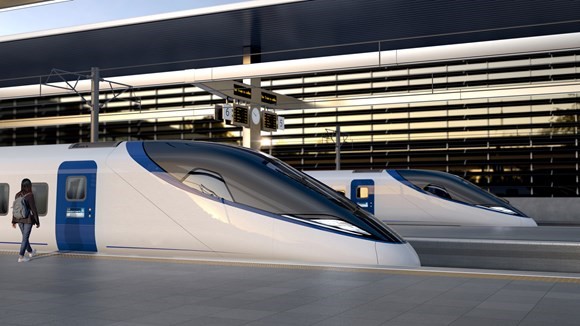“I’m going into a tunnel, so I might lose you” likely to be thing of the past on Britain’s new high speed rail network Passengers using Britain’s new high speed rail network will enjoy seamless mobile coverage delivering uninterrupted streaming and calls as trains speed through its tunnels, cuttings and open sections. Journeys on HS2 will make the days of hearing refrains familiar to many who travel by train today, such as, “I’m going into a tunnel, so I might lose you” a thing of the past. To watch movies, get facetime with friends, family or work, or just make calls, passengers can simply link their device with the train’s onboard Wi-Fi. From its earliest days of development, HS2’s infrastructure has been designed to include technology that provides seamless and uninterrupted passenger comms. In a step-change from the line-side railway signalling operated on the conventional network, HS2’s will be radio based. A sequence of masts sited at 2-3km along the route and radio feeder cables running the length of its tunnels. This infrastructure has been developed to also deliver mobile connectivity for passengers. Both will be picked up by each train’s radio antenna as it traverses the new route at speeds of up to 225mph. The train’s onboard equipment will transmit the passenger signal throughout the train to help ensure a seamless connection. People using HS2 stations will also benefit from the same level of coverage. HS2 engineers believe that the train picking up the signal from the railway’s telecoms infrastructure is superior to just leaving it to passengers’ own mobiles and tablets to link with each passing mast, which could be prone to occasional drop outs, and also reduces bandwidth. HS2’s head of project delivery for communication systems Richard Kirkham said: “The massive advantage of taking a clean sheet of paper and developing a new railway network for the 21st century, to operate in the twenty first century, is that we can build in the things people expect, like modern telecoms. “In practice that means HS2 tunnels, open route sections, stations and trains all include telecoms in their design specification, which enables the railway to operate as a single system.” Richard also explained how HS2’s design has been developed to provide flexibility to support the full generational range of mobile technologies. “To accommodate fast moving mobile telecoms technology, we’ve designed HS2 to be flexible so that it can incorporate future generations as well as supporting earlier generations people will continue to use.” A further benefit of HS2’s designers’ far-sighted approach will see the benefits of improved passenger connectivity potentially extend to areas along the route. That is because anyone’s device that can pick up the signal can use it.






